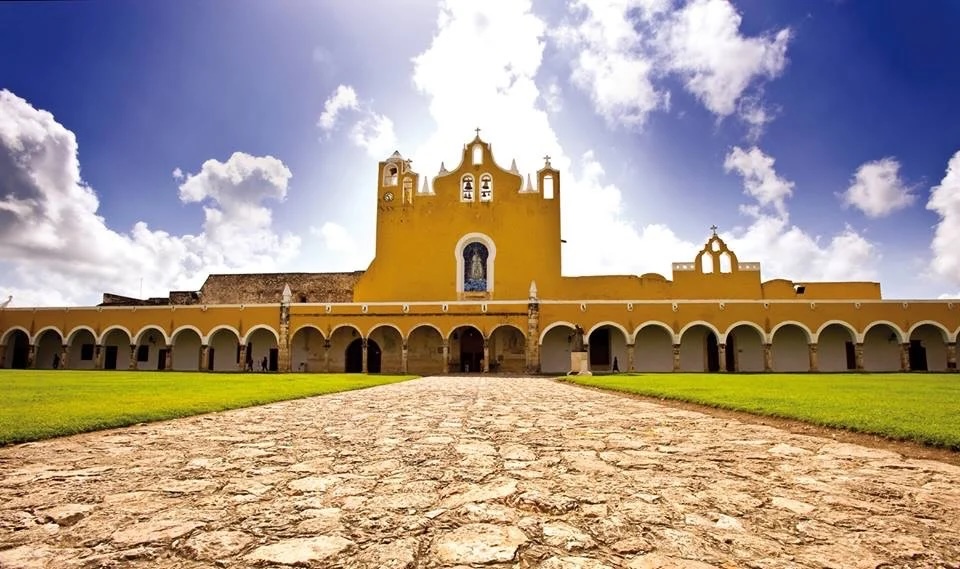Today we’re heading to Izamal, the “Yellow City,” where we’ll see more Maya ruins and explore the fascinating Convento de San Antonio de Padua. It’s truly one of the coolest Catholic churches you’ll ever see, in Europe or the Americas.
For some context, here are two short pieces on the history of Izamal and the meaning behind some of the representations of Maya and Catholic life you’ll see there. First is a chapter from Matthew Restall and Amara Solari’s The Maya Apocalypse and Its Western Roots (2011). It’s full of great images from the Convento de San Antonio de Padua, usefully connecting what you’ll see to the big issues of evangelization that Dr. Jorge Laris Pardo covered in yesterday’s lecture.
Next, a brief article on the spolia (stones taken from a dismantled structure and used in a new one) in Izamal by Jesper Nielsen at the University of Copenhagen.
As you explore Izamal, consider…
- How do the murals tell a story about the relationship between the Maya and the Spanish Catholics who sought to convert them?
- Where do you see reminders of Mayan architecture?
- How do religious buildings (churches, monasteries, etc.) impress their importance on visitors? What specific visual and architectural tricks are at play in Izamal? How is it similar to/different from the “power architecture” you saw at Chichén Itzá?
